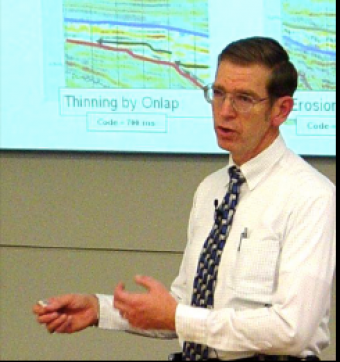This lesson covers the development phase of an asset's life, and also reviews the exploration and production phases of the life cycle. In the exploration phase, there is an opportunity to capture opportunities and discover hydrocarbons through large-scale to finer-scale analyses. The three (3) major considerations in the development phase are: (1) the area and thickness of the oil or gas reserves so we can estimate the volume; (2) the internal architecture of the reservoir rocks; and (3) how the reservoir is broken into separate compartments to be produced. The last stage of an asset's life is the production phase.
I would divide the class time into three (3) segments: (1) review of the previous exercises (15 minutes); (2) lecture on this unit (Development Geology and Geophysics; 30 minutes), and (3) introduce the exercise presented here (15 minutes). This lesson will therefore take about 60 minutes to cover.
The exercise itself has each team complete well ties for three (3) additional wells. Then they will correlate six (6) horizons on a seismic traverse that passes through all four (4) well locations (discovery well and three (3) delineation wells). This exercise should take about 25-30 minutes.
In this lesson, students will be able to:

This course, based on teaching material from Dr. Fred Schroeder (formerly of Exxon/ExxonMobil), reflects on the geology and geophysics basics for the petroleum industry. General geology and basic geophysics are not required, but helpful with the material.